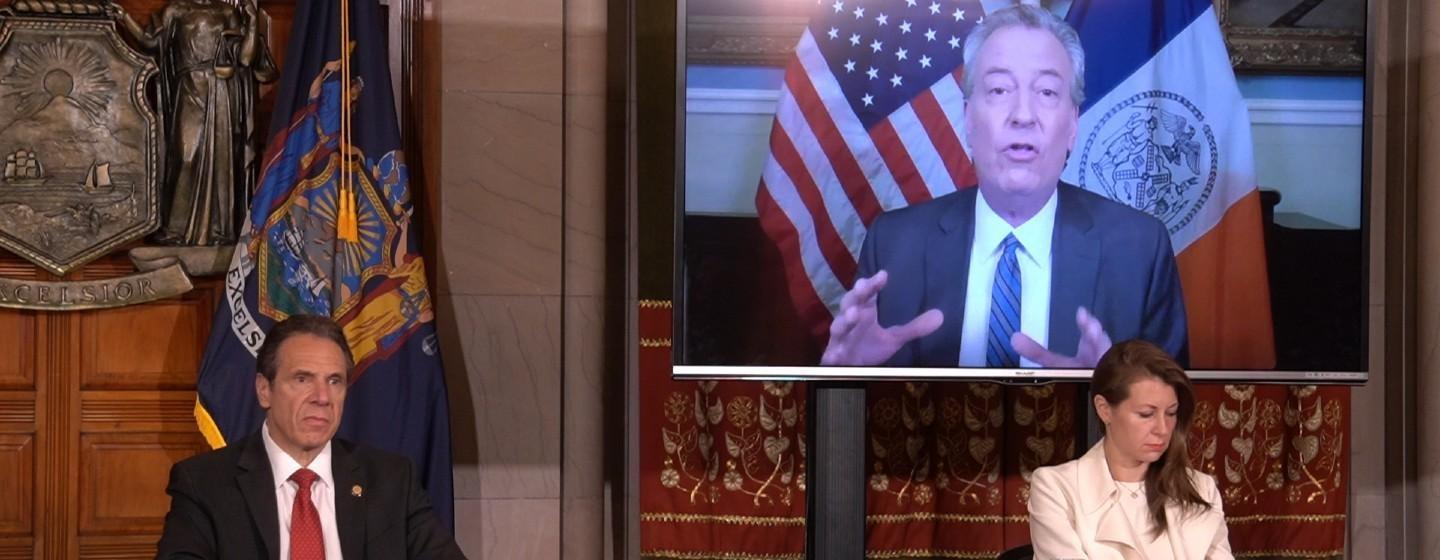The subway in New York City will close from 1 a.m. to 5 a.m. every night until further notice to give workers time to disinfect every train car before essential workers use the mass transit system to go to work the next morning.
The plan was announced Thursday in Albany by Gov. Andrew Cuomo, who virtually hosted New York City Mayor Bill de Blasio at his daily press briefing for the news.
“The MTA is undertaking something we thought was virtually impossible," Cuomo said.
The Metropolitan Transportation Authority, a state agency that controls the subways, will also disinfect the Long Island Rail Road and Metro North lines daily, though those won’t have to be taken out of service to be cleaned. Buses will run as normal.
Essential workers who have to travel overnight won’t be left without transportation, Cuomo said. The state will provide them with buses, for-hire-vehicles, and so-called “dollar vans,” which are essentially vehicles that can carry a handful of people.
The plan will take effect next Wednesday, May 6, said MTA Chairman Pat Foye, who was present at Cuomo’s briefing Thursday with interim MTA President Sarah Feinberg.
Cuomo sought the strategy this week after the New York Daily News published a series of photos, showing homeless individuals sleeping on the subway overnight. Cuomo called the scenes “disgusting,” and ordered the MTA to come up with a daily disinfectant plan.
De Blasio said the plan, aside from making mass transit safer for essential workers, will also provide more opportunities to shift homeless individuals into the shelter system.
“Here is an example of saying we have now found new ways of getting street homeless people off the street,” de Blasio said.
Cuomo also invited former New York City Mayor Michael Bloomberg to Thursday’s briefing, via a virtual conferencing app.
Bloomberg, de Blasio’s predecessor, is leading the state’s initiative to build an army of so-called contact tracers, which will be tasked with identifying connections between people who’ve tested positive for COVID-19 and the people with which they’ve recently interacted.
“When social distancing is relaxed, contact tracing is our best hope for isolating the virus when it appears, and keeping it isolated,” Bloomberg said.
The initial wave of contact tracers will be composed of workers from state, city, and county health departments, Cuomo said. State employees with little to do at home will also be enlisted for the cause, he said.
The State University of New York and City University of New York will then build an application pool for people who want to be contact tracers. Those individuals, if selected, will go through remote training and will be assessed before they’re allowed on the job, Bloomberg said.
New York will likely begin its first phase of reopening the economy in about two weeks, when Cuomo’s lockdown order is set to expire. Some industries in some regions will likely be allowed to resume at that time, but no final decision has been made on that front.
From a statewide perspective, the COVID-19 numbers continued to trend in a positive direction Thursday. The current number of people hospitalized dipped to 11,598 Wednesday, with 561 fewer people requiring treatment at a facility.
Of those, 3,157 were intubated, which is a net decrease of 124 from the day before. An additional 1,232 people were discharged from the hospital.
The statewide number of deaths reached 18,274 Thursday, which is an increase of 306 over Wednesday’s data. A total of 304,372 people have now tested positive for the disease in New York, according to state data.





